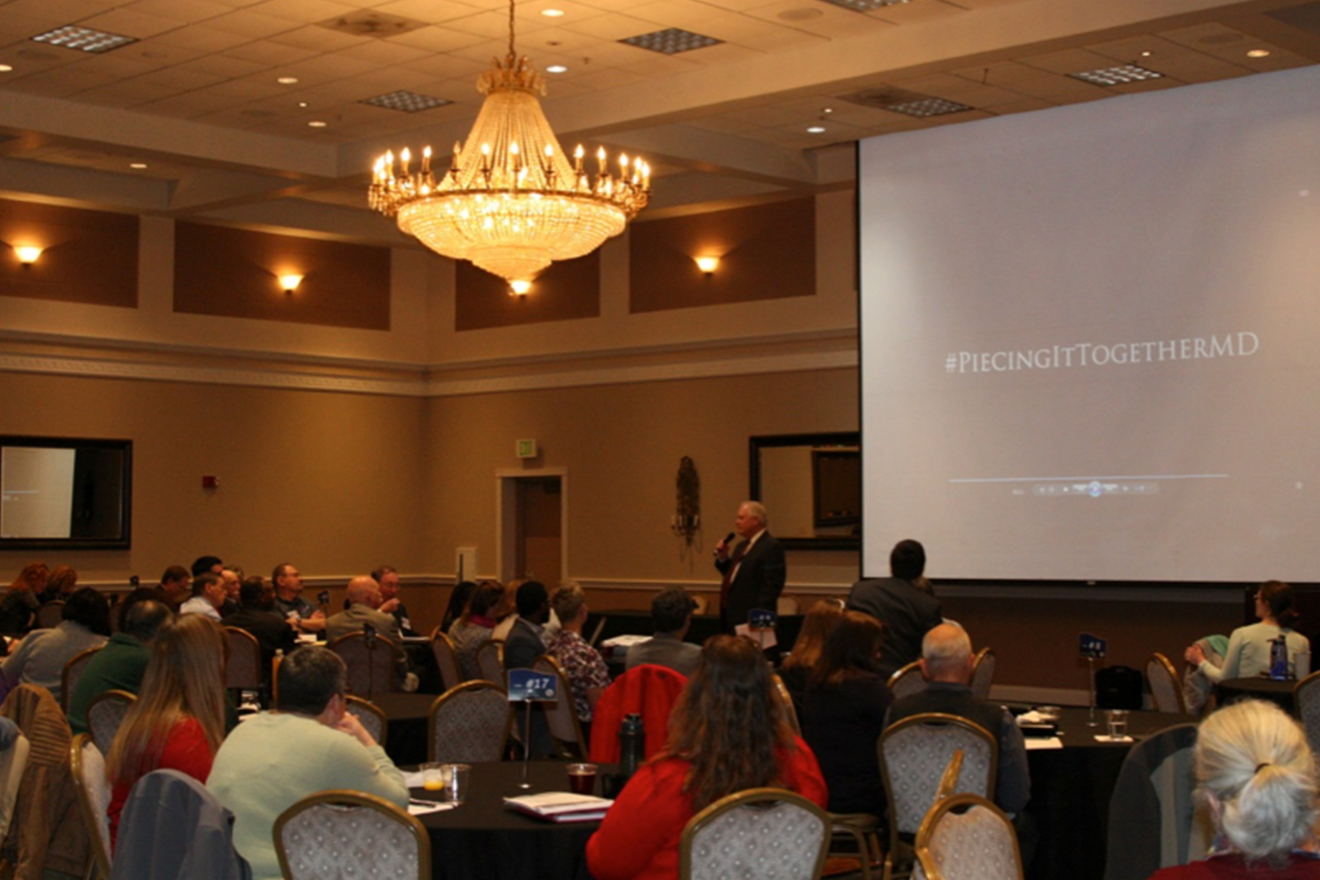Threats, whether natural or manmade, have the ability to negatively impact communities. Although government agencies serve communities before, during, and after disasters, emergency management officials understand the realities of gaps that exist in disaster management systems exclusively managed by government. There is a mounting cognizance of the need for effective communication and coordination from a broad range of stakeholders to reduce the negative effects of a given disaster.
Emergency management officials recognize the importance of diversity in disaster management. Often, the unsung heroes of disaster response and recovery are the voluntary organizations in the community. They frequently begin their work alongside the first responders and are the last ones out after the long process of recovery has been completed. In addition, engagement between the private and public sectors is a component of increasing community resilience. This is not simply a matter of the private sector retaining the capabilities to support communities, but also the ability of government agencies to provide support to businesses. When surveyed, partners in Maryland’s Private Sector Integration Program often highlight the need to receive timely and vetted information from their government partners. It is important to emphasize that partnerships between the public, private, and voluntary sectors can help to elevate a community’s resilience index.
Getting the Team Together
A whole community approach to disaster management requires an investment from public, private, and voluntary organizations. The utility of this investment allows for a collective response because no one organization can fully address all the complexities of disaster management. Emergency exercises present the opportunity to practice coordination between stakeholders ahead of an event. On 16 November 2017, the Maryland Emergency Management Agency (MEMA) convened over 100 representatives from various levels of government, the private sector, and voluntary organizations to share the challenges, lessons learned, and best practices from disaster events. Although not akin to the traditional structure of an emergency exercise, the theme of that one-day summit, “Piecing It Together: Building Resilience Through Partnerships,” was birthed out of the concept that each organizational component has a “piece” or role in emergency management.
The challenge in bringing together a broad range of stakeholders is building group consensus. In an effort to develop sessions that identified and removed potential roadblocks to gaining buy-in, a pre-event survey was developed. The survey, sent to the private and voluntary sectors, allowed participants to provide feedback on logistical aspects such as location and topic areas, and gave them an opportunity to become members of the planning team. The survey results highlighted the need to address lessons learned from recent incidents. An interdisciplinary planning team with representation from state, local, private, and voluntary organizations converged to guide the development of the overall summit. The depth of subject matter expertise on the planning team allowed for the following targeted goals to be developed:
- Determine the best way to maintain partnerships between the public, private, and voluntary sectors;
- Determine if current plans and protocols sufficiently support resumption of operations and continuity following disaster situations;
- Examine key issues, challenges, and resolutions that exist in response to managing interruptions to business operations, such as complex coordinated terrorist attacks, civil unrest, and other no-notice disaster events;
- Examine the effectiveness of maintaining the flow of critical information among and between the public, private, and voluntary sectors;
- Identify strengths, gaps, and areas for improvement in regard to information sharing networks before, during, and after no-notice disaster situations; and
- Identify ways to improve coordination among and between the public, private, and voluntary sectors before, during, and after disaster situations.

Russell Strickland, executive director for the Maryland Emergency Management Agency, provides opening remarks at the 2017 Summit: “Piecing It Together: Building Resilience Through Partnerships” (Source: MEMA, 2017).
Collaborative Conversations
The summit captured the essence of the interdependencies that exist in the disaster management process. Throughout the day, the summit showcased initiatives being developed and occurring regionally and nationally – including work being done by the National Voluntary Organizations Active in Disaster (NVOAD), Region 3 of the Federal Emergency Management Agency (FEMA), and the West Virginia Voluntary Organizations Active in Disaster (WVVOAD). Jenny Gannaway, executive director of WVVOAD, and Lorra Michelle Breeland, the voluntary agency liaison for FEMA Region 3, presented on the work that is being done in West Virginia to assist residents who lost private access bridges to their homes as a result of flooding events in 2015, 2016, and 2017. To date, 44 bridges have been repaired or replaced and over 100 are on a list for future work. The WVVOAD member organizations continue to help drive the project forward through various avenues, including fundraising and labor.
Greg Forrester, president and chief executive officer of NVOAD, explained that a challenge encountered by the voluntary sector during the 2017 response to Hurricane Maria in Puerto Rico was determining how to provide wrap-around services to individuals and families relocating from Puerto Rico to the U.S. mainland. Issues including sheltering, feeding, schooling, and translation services needed to be taken into consideration for these evacuees, and the communities turned to nonprofit and voluntary agencies to fill the gaps that existed. The impact of the stories and lessons learned will hopefully strengthen recovery and response by the voluntary community in Maryland.
Throughout the summit, conversations with the private sector explored avenues for risk reduction and addressed the challenges businesses experience while managing disaster situations. The opportunity to share best practices across disciplines and sectors created an atmosphere for organizations to examine and identify ways to improve their preparedness efforts. These connections afforded the unique opportunity for pre-event collaboration and communication between the public and private sectors. The return on investment is seeded in an integrated network of two-way information exchange with the aptitude to influence operational decisions.
Outcome & Recommendations
Although the task of building partnerships may be arduous, the true feat is sustaining them. Recognizing that the effort of all sectors is required to create resilient, prepared communities is a starting point for this process. The synergy generated at this summit is a part of the linkage needed to support the relationship between governmental and nongovernmental organizations. At the end of the summit, participants were encouraged to consider the next steps. This includes keeping the connections established and continuing the conversations. The result, based on the results of the participant feedback, is that events like this are valuable. Over 90% of participants who responded to the post-event survey conveyed they were pleased with the overall event. In addition, participants found the opportunities to network with others among the leading outcomes of the event. This network can be translated into the mobilization of preparedness, response, and recovery actions throughout Maryland.
Attendees left with a greater idea of the capabilities that exist throughout the state and contacts for various types of emergency events. As each sector works to solve the problems sustained by disaster situations it is helpful to know that a support network of expertise with a communal goal of increasing resilience exists. The challenge still exists in identifying which, if any, participants are missing from these dialogues and the work needed to engage them. Raising the resilience index requires all community members to recognize their roles in preparing for, responding to, and recovering from disaster situations.

Charissa Cooper
Charissa Cooper is currently the private sector liaison and a National Capital Region planner for the Maryland Emergency Management Agency. In this role, she manages the Private Sector Integration Program and performs outreach to the business community in Maryland. Prior to this position, she led efforts regarding plan development for Ebola virus disease and other emerging infectious diseases at the Georgia Department of Public Health. She has experience developing and maintaining emergency response and all-hazard preparedness plans at the federal, state, and local level. She received her Masters of Public Health specializing in Environmental and Occupational Health from Florida International University.
-
This author does not have any more posts.

Jessica Nusbaum
Jessica Nusbaum is the Maryland State individual assistance officer and community preparedness coordinator with the Maryland Emergency Management Agency (MEMA). She works closely with voluntary agencies and other community partners, using an all-hazards approach to preparedness, to ensure that the citizens of Maryland are ready when disaster strikes. Prior to starting her career in emergency management, she spent 13 years working in the nonprofit sector, providing various case management services to individuals and households with barriers such as mental illness, homelessness, and substance abuse. She holds a bachelor’s degree in business from Mount Saint Mary’s University.
-
This author does not have any more posts.






